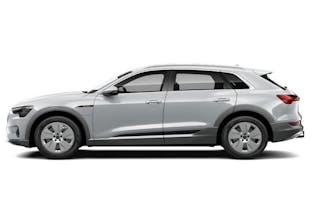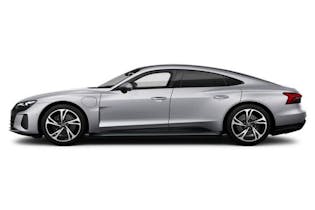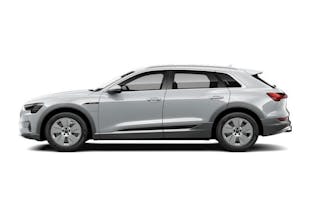Toyota Yaris ZR Hybrid car review
One week living with the Toyota Yaris ZR Hybrid.

The Yaris name is part of the furniture in New Zealand. The compact little car from Toyota has more than 20 years of history here and has gained a reputation for providing a great package in which to zip around town.
Toyota kindly lent us the top-of-the-line ZR Hybrid model to use as a daily driver for the week, to see how it fits into the Kiwi lifestyle. This hybrid vehicle has both a petrol engine and a small motor and battery that’s charged by your driving or the engine, so you don’t ever need to plug it in.

First impressions
My first thought (as a tall person) was that I’d never fit. This is not a particularly big car and that rings true when you measure it – it’s less than 4m long. And while I could easily get in and drive it, it’s clearly not the daily driver of a 6'9'' individual, as my right knee was resting hard on the door handle. After a while, rest assured this is not comfortable.
The Yaris is attractive from the outside with some creases in the bonnet and flared tail-lights. Our model was in red and it looked nice in my driveway.
On the inside, seat upholstery is in a two-tone fabric that could be a polarising feature, but it’s quickly hidden by your behind anyway.
Across the dashboard, everything seems wonderfully laid out with a good sprinkling of modern gizmos that you’d usually only find on much more expensive models. This is especially true for the likes of the head-up display (HUD) that projects information onto the windscreen in front of you (speed signs, current speed and navigation).
Little cars often feel cheap inside but that’s certainly not the case here. It shouldn’t feel cheap anyway, because it retails for $37,290 (though you can then apply for the clean car discount of $4294).
How we test
Each vehicle we trial gets the same treatment: a week of commuting in rush hour from Lower Hutt to Consumer HQ (a round trip of 28km); a run to the supermarket; and a drive over the Remutaka Hill and back from Lower Hutt, to see how it goes on a longer weekend trip. In total this makes for about 270km of motoring.
We record fuel use (both actual and on the trip computer) and measure electricity usage where appropriate, with PHEVs and EVs. The actual fuel use is measured by filling the tank to the brim at the start of the trial and then again at the end, and comparing numbers. It’s an inexact science that we use as a check, but it’s still a real-world appraisal – just one you take with a grain of salt.
Commuting
The Yaris makes for a fine little commuter. While the car is small, the seats actually sit quite high (I personally would’ve liked the option to lower it much further). The higher seats make getting in and out really easy for most people.

The ZR has adaptive cruise control, which is a nice feature in commuting. It keeps your following distance and speed consistent with the vehicle in front and takes you all the way down to a stop. Like most systems, it can’t see and think ahead like a human can, so it does lead to speed-ups and heavier braking than if you’d just let things coast.
Under acceleration the petrol motor is ever-present, but the car tries to spend as much time as it can in EV mode. It even switched off the petrol motor at one point while I was driving at 90km/h on the flat – that’s quite impressive for a mild hybrid.
The trip computer gives you a little readout when you finish each trip on the dash. My first one was spent with 70% of the time in EV mode after a mix of 100km/h driving and bumper-to-bumper crawling on the motorway.
Supermarket trip
When it comes to parking, you really appreciate the Yaris’ size (or lack of). It’s very easy to slide into parks. And while reversing cameras are standard across all the Yaris models, the front parking sensors on the ZR version come in very handy when going nose-first into spaces.
The boot is small but it can easily fit a week’s worth of groceries. You can also raise the boot floor to the same level as the boot lip to easily slide your bags in and out.
Longer journey
The Yaris doesn’t look like the sort of vehicle that you’d take a roadie in, but it was actually quite at home on the longer trip. It was surprisingly nippy going over the Remutaka Hill – maybe that’s due to the electric motor providing immediate assistance out of corners.
Clearly it wasn’t approaching anywhere near its limits, though it wasn’t driven in a manner to test them because it’s just uncomfortable for everyone. The car’s occupants will lose their lunch before the Yaris does on the winding ascent and descent. It definitely held its own and it wasn’t the sort of embarrassing car that would hold up long lines of traffic on steep highway sections.
Because it’s all about me as the driver, I would’ve liked the infotainment screen to be slightly angled towards me rather than facing directly towards the back of the car. It’s not a deal breaker, I’d just like it better.
One quirk that I picked up on was that the HUD’s display was weak on the brilliantly sunny day and the combo of wearing sunglasses meant I could hardly see it. This isn’t a Toyota-specific problem, it’s a general HUD thing. However, it’s hardly taxing to look down at the dashboard.
Final thoughts

It’s not a car for a big family that needs carting around. But it’s a great option for a single or couple, especially when used for commuting and trips around town. The driver’s seat is quite high in its lowest setting and gets quite a lot higher from there; that makes it easier for getting in and out, and could suit older drivers.
The key to a hybrid being a success is its fuel use. Toyota claims this Yaris uses 3.6L/100km. The trip computer reported trips that ranged from 2.2L/100km up to 7.3L/100km (for the short drive up the hill to my house from the supermarket). The average readout for the week was 4.0L/100km on the trip computer. The actual was just over 14L of fuel used for the week, which equated to 5.2L/100km.
We've tested 95 electric and hybrid cars.
Find the right one for you.
Audi

Audi

Audi

Member comments
Get access to comment